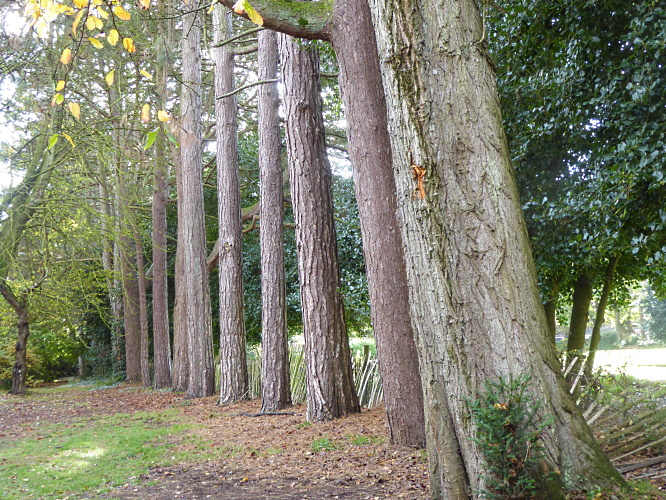
This was a chance to look at some of the rare trees I was shown on the Friends’ walk on 27th May this year, as well as some old favourites. Near the Text Garden we checked out the Aspen, although there wasn’t much to see after most of the leaves had fallen. The breeze was also blowing down the Tulip Tree leaves onto the clipped tops of the letter-shaped hedges made of Box and Yew. The words spell out the names of flowers, but they are hard to read from ground level. They show up better on Google Maps Satellite View, where you can see the names Love-in-a-Mist and Lords-and-Ladies at one end, and reading in the opposite direction with some letters missing, Forget-me-not and Lily-of-the-Valley.

We could hear Ring-necked Parakeets, but caught sight of only one. By the time we got to the Rose Garden, it had started to rain quite heavily, so we sheltered under a spreading Beech tree.
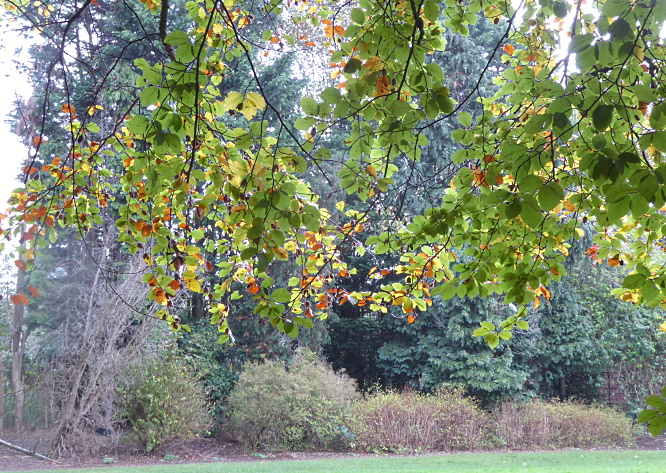
One of the young trees on that lawn was a fiery red. Was it a Cherry? The bark didn’t look right although the leaves were simple enough. One for another time.
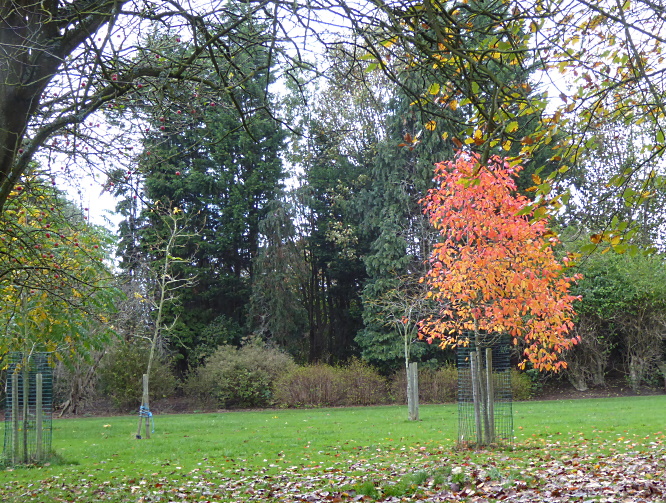
We also hoped to definitely identify the Pecan Nut sapling. Was it one of the weedy ones, or was it this flourishing one with the sucker coming from the base? No idea, but we hope it is the good’un.
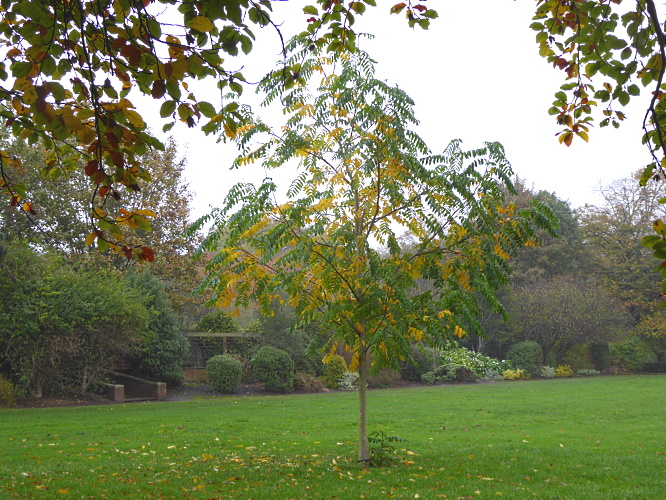
A small shrub or bush that we previously though was some kind of Pieris turned out to be a Strawberry Tree, Arbutus unedo. The round red fruits are about 1.5 cm across and are edible but unpalatable.
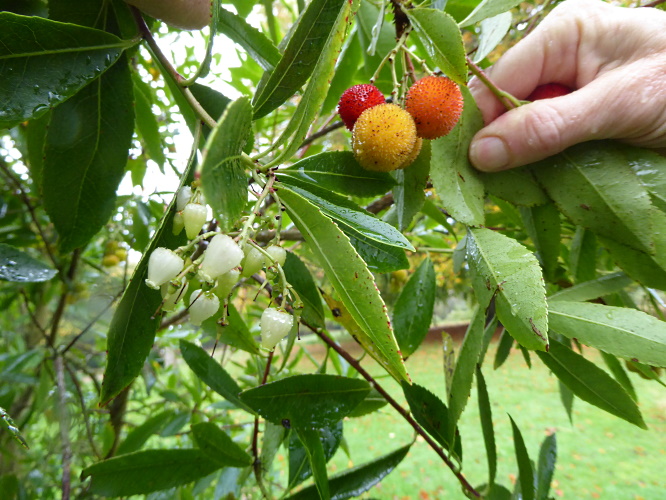
They are easily confused with the round red fruits of the Chinese or Strawberry Dogwood Cornus kousa, but the dogwood fruits have a dark-spotted skin, are all singletons and grow on very long stalks.

The Golden Rain tree had lost all its leaves in the last couple of weeks, but there were still some seed cases high up. We were more interested in another exotic-looking shrub with strange blue berries surrounded by fuchsia-coloured bracts. I looked it up at home, and it appears to be Harlequin Glorybower Clerodendrum trichotomum.

We headed through the rain for the shelter of the Manor House, spotting a large-leaved young tree in an unassuming corner. We will have to look at it again, but it might be a Butternut. I was also collecting wet fallen Beech leaves with odd green patches. Last week Autumnwatch did a piece about leaf miners leaving green sections in brown leaves.

On closer inspection at the lunch table, we could see that one of them definitely had a wee beastie in it, which was likely to be a larva of a moth called Stigmella and probably Stigmella tityrella. The moth is called the Small Beech Pigmy, common and widespread, apparently. The sun came out, so I was able to hold the leaf to the light for a good look. The egg seems to have been laid at the bottom of the green area and the grub then ate its way upwards, leaving frass behind it. It wriggled a bit at the point, then broke through to another leaf segment.
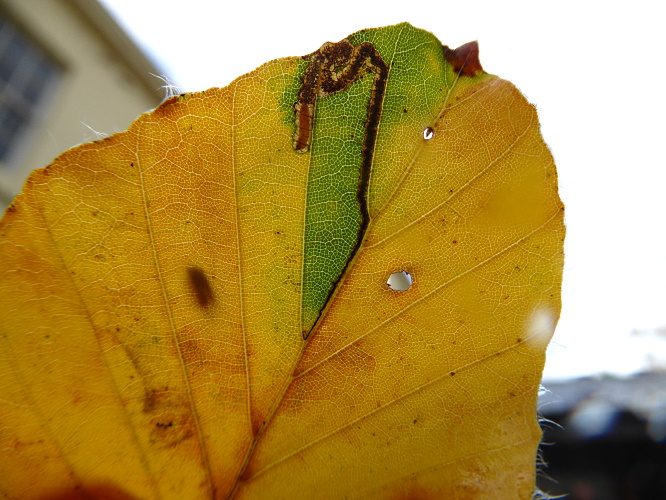
I went on Richie the Ranger’s Calderstones walk last Tuesday. On the radio at the weekend he had mentioned he would be leading people to a ”Sausage Tree”. However, on the day, he said he had found on his recce that it was gone, and it had probably died since he was last there. I think I remember seeing it with him a couple of years ago, in the Old English Garden. If the tree he had in mind was Kigelia africana, it’s an African tree, and so rare that it isn’t on the Tree Register’s list, suggesting there are none at all in the British Isles. I’m sorry I didn’t take more notice last time Richie mentioned it! However, he did take us to a lovely shrub in the Old English Garden, the Beauty Berry, Calicarpa bodinieri, which bears amazing tiny purple berries in the autumn. Naturally we snaffled some to try and grow at home.
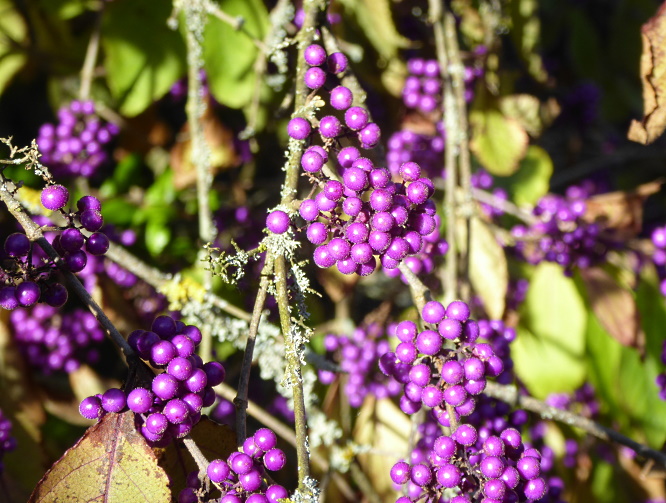
The Japanese Garden is fantastic at this time of year, even in the rain, especially with the Maples putting on their best autumn performance.
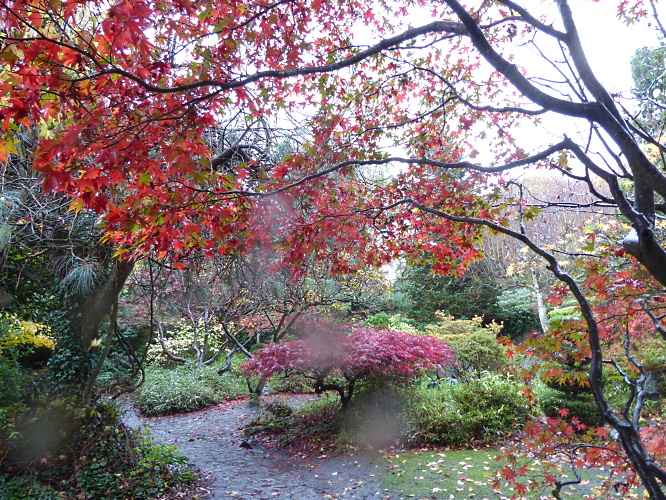
Towards the Allerton Oak two trees were spreading carpets of lovely leaves. In the foreground are the red and gold leaves of the Sweet Gum Liquidambar styraciflus, while further back are the yellow leaves of some sort of Lime.
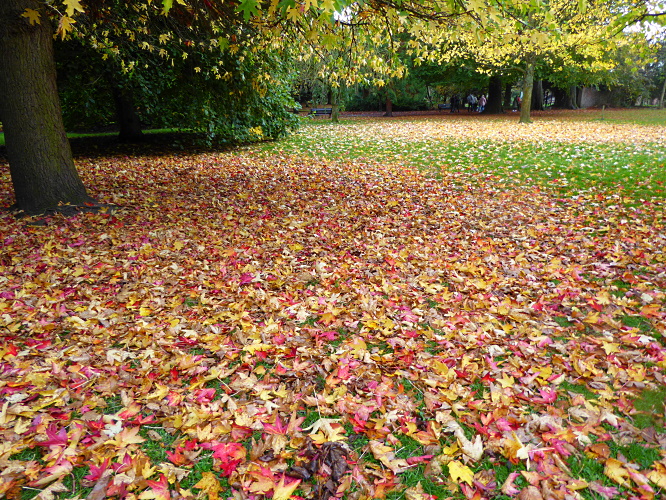
A yellow Persian Ironwood was peeping out from behind a dark Holly.
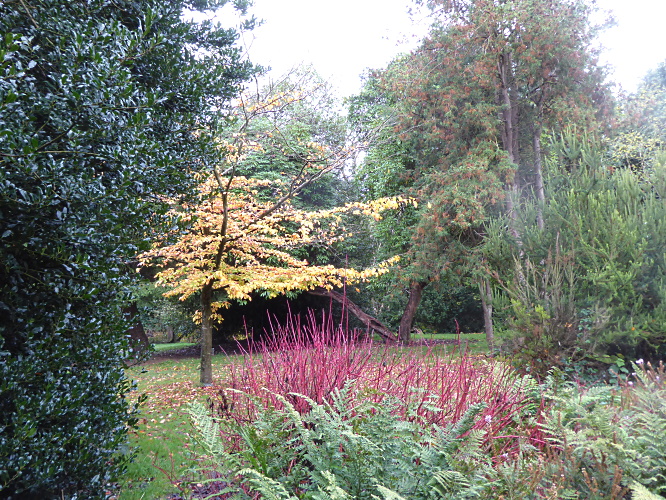
The famous Allerton Oak is said to be 1000 years old. It was the 2019 English Tree of the Year and it was awarded a grant from the People’s Postcode Lottery to pay for the new supports under the old spreading branches.
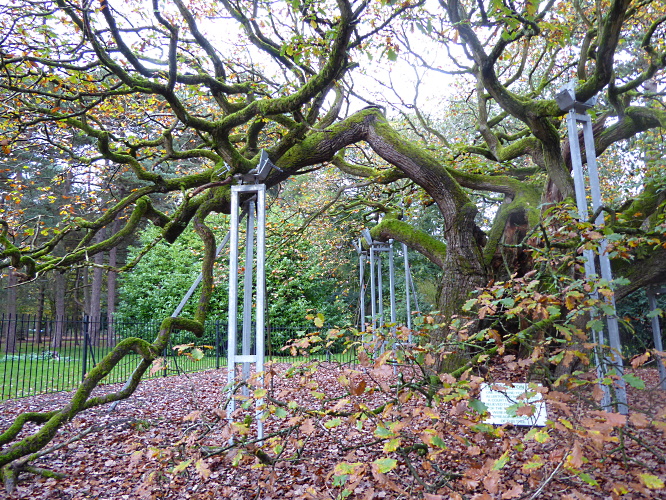
We took a quick look at the Chinese Cow-tail Pine Cephalotaxus fortunei and the Spur-leaf Tetracentron sinense, neither at their most photogenic at this time of year, then made our way back to the south side of the park for the bus.
Public transport details: Bus 86A from Elliott Street at 10.15, arriving Menlove Avenue / Ballantrae Road at 10.55. Returned on the 86 bus from Mather Avenue / Storedale Road at 2.10, arriving Liverpool 2.40.
